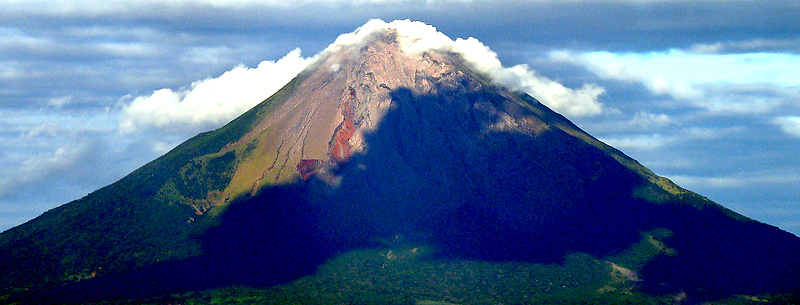Northern Nicaragua boasts five active volcanoes and five other inactive volcanoes. Bring your hiking shoes, as these volcanoes are the real deal. If hiking is your thing, or you would just like to enjoy the best view in Nicaragua, ask us about our volcano tours when making your booking.
Cerro Negro
Cerro Negro is the youngest volcano in Nicaragua, with only 160 years. It is said that Cerro Negro will have an eruption soon. The volcano is situated overlooking the city of Leon, which he has covered in ashes on several occasions. Its name means black mountain, probably because of the pitch-black volcanic sand and rocks that cover the entire cone. Although only 745 meters high, there are no shades and climbing up is hard.
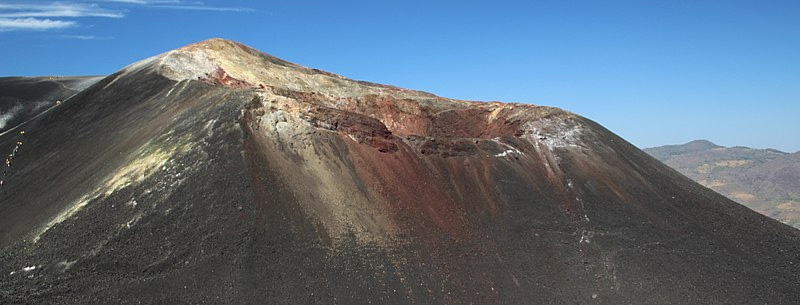
Cerro Negro means ‘Black Hill’, and it is the perfect description of this truly unique volcano. The Cerro Negro volcano was formed less than 160 years ago (in 1850) and that makes it the youngest volcano of Central America. The volcano’s young age and constant volcanic activity have made it impossible for trees and plants to grow on the steep, black slopes. Some slopes are covered by huge volcanic rocks, others by fine volcanic sand.
The most recent eruption of the Cerro Negro took place in 1999. Glowing lava violently erupted from the volcano, as well as rocks and ash. The ash caused damages in the city of León, 25 kilometers away. A new crater was formed during recent eruptions. The Cerro Negro is one of the most active and most interesting volcanoes in the region.
Hike Central America’s youngest (and one of the most active) volcano, Cerro Negro. The climb to the summit is like walking the surface of the moon: devoid of plant life, spewing sulfuric gases, crumbling beneath your feet. The only thing you’ll miss is the weightlessness.
After hiking Cerro Negro, a refreshing dip in Laguna El Tigre will feel like heaven. Enjoy a relaxing picnic lunch and take in the beauty of this pristine crater lake, whose name actually refers to a jaguar due to misnaming by the Spanish. Restored from Asososca we head to León Viejo, or “Old Leon”, to experience what is let of the second oldest city in Nicaragua. Abandoned in fear of a volcanic eruption that never happened, the city was gradually buried by expulsions of ash and volcanic stone. What we see today is a result of excavation that began in 1967.
Momotombo
One of the most significant landmarks in Nicaragua is the Momotombo Volcano. This almost perfect cone-shaped stratovolcano can be seen from many places, including Nicaragua’s capital city Managua as well as the northern city of Matagalpa, over 100 kilometers away. The Momotombo has erupted several times in the last couple of centuries, most recently in 1905. There are several settlements close by that have been and continue to be threatened by the volcano’s eruptions of lava, smoke, and ash. For more than a century the volcano has been relatively quiet, although gases are continuously emitted and the temperatures of certain parts of the volcano exceed 500°C. A geothermal plant has been set up at the base of the volcano, producing electricity from the volcano’s heat.
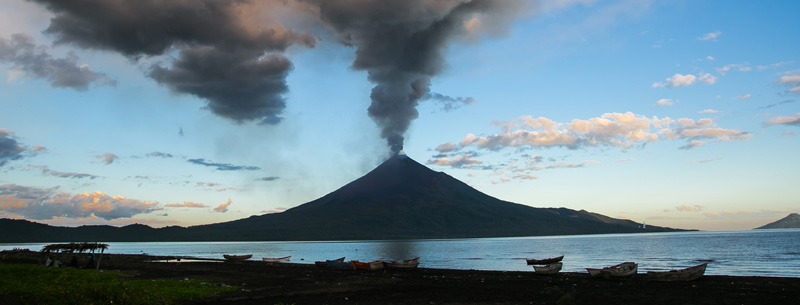
The Momotombo is one of Nicaragua’s most popular volcanoes. Situated on the north shores of Lake Nicaragua, climbing it is not an easy task, especially because of its height ( at 1258 meters ) and the lack of shades on the upper part. There is steaming gas in its crater and it is considered active. Visitors to Mombacho’s jagged and peak-less 4,000-foot top can experience a true cloud forest up-close, and when the sky is clear, a view of perhaps a third of the Republic of Nicaragua.
Reserva Natural Volcan Cosiguina – El Viejo
Its last eruption occurred in 1835. Its eruption was so potent; the soundwave was heard even in faraway countries like Colombia. It was categorized as the third most potent eruption in America ever to be recorded. It even created the Islets of Cosiguina.
San Cristobal
San Cristóbal is situated about 100 km. Northwest from Managua. It was already described in 1520. In the past, severe eruptions affected the area. Today, it is still active. However, it is very hard to climb, which can be done with a guide and proper health condition and gear. It is 1745 meters high.

Telica
Telica is probably the most popular and active volcano in Nicaragua. Its activity includes constant gas, mud pools, and steaming soil as well as eruptions. Its crater is very steep and deep, also very wide, caused by past eruptions. A geothermic plant is planned to be built near the Telica in the near future. You can climb the volcano and spend the night near the crater. That way the visitor can see the hot lava at night. It is 1061 meters high.
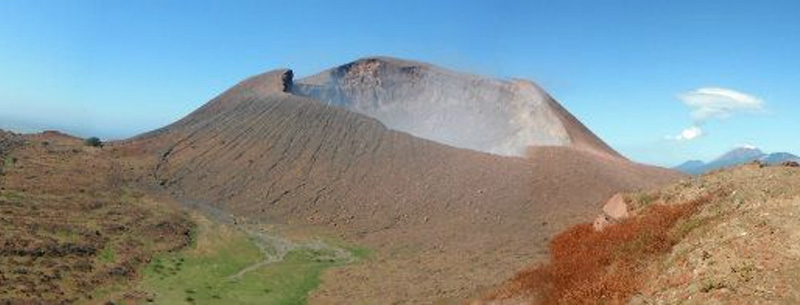
El Hoyo
El Hoyo is a group of volcanic cones. The highest elevation is 1050 meters. The area is not densely populated. In the upper part, the visitor can find two lagoons that used to be active volcanic craters, Malpaisillo and Laguna Asososca. Another volcanic cone is Las Pilas.
Apoyeque
It is situated in the Peninsula of Chitepe, in Lake Managua. The height is of only 518 meters. The Peninsula consists of two lagoons, Apoyeque and Xiloá. Apoyeque was created after an eruption of another volcano with the same name. From the top of Laguna Xiloa, the view is amazing. Apoyeque is a little bit hard to reach.
Masaya
Masaya, with a height of 635 meters, is situated near Managua, near Granada and other localities. Also, its most active crater, Santiago, is easy to access. Therefore, and because of its interesting gas activity, it is one of the most popular tourist attractions in the south of Nicaragua. Its last eruption took place in 2003. Currently, it is a national park.
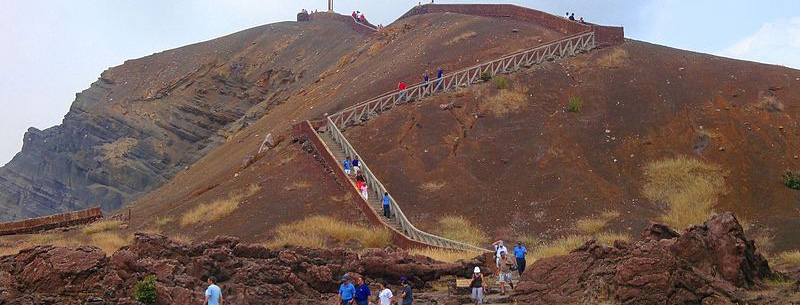
The Masaya Volcano National Park is located en route to Masaya. The large volcano located at the center of the park still steams and belches out of its three ancient craters, the Santiago Crater being the most impressive and the most active. Looming over the entrance to Masaya is the historic Fort Coyotepe. This guarded sentinel served as a prison during the ’70s and ’80s and is now a museum.
Apoyo
Between the cities of Granada and Masaya is Laguna de Apoyo, a volcanic freshwater lagoon created 23000 years ago after a volcanic eruption. Although not totally dormant, the attractions include freshwater, canoeing, fishing and boat tours within its crater. Its height is 468 meters.
Volcan Maderas
Maderas Volcano is situated in Ometepe Island, next to Concepción Volcano. Although it is extinct, a disastrous landslide affected the north side in the ’90s. It s last activity period occurred 3000 years ago. Its crater is filled with a lagoon. It is a beautiful place to visit, very quiet and with beautiful scenery. The people living on Ometepe are also very friendly and helpful.

Volcano Concepcion
Concepción Volcano is situated on Ometepe Island, in Lake Nicaragua. It is very high with 1610 meters above sea level. It is active, and its last eruptions occurred in 1986 although activity was reported in 2005. Its top is covered by a tropical forest and the view from above is extremely amazing. From its top, the visitor can admire the beautiful scenery and the surrounding areas, including the lake, the other volcanoes, and the beautiful coastal towns.
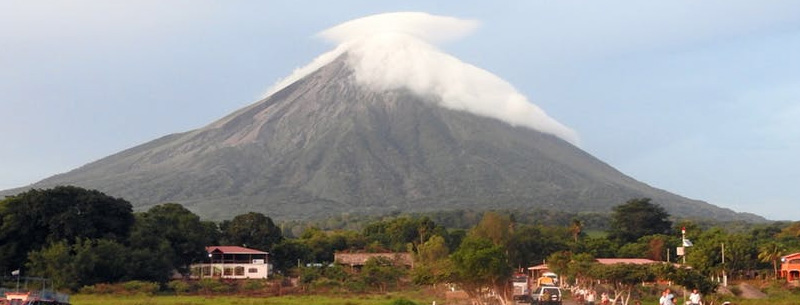
Mombacho
Mombacho is situated near Lake Nicaragua, near the city of Granada. It has a height of 1345 meters. All the famous Granada Islets are a result of a past eruption of Mombacho. Currently, it is covered by forests. A truck takes visitors to the lookout point, and from there the tourists can access the crater. Tropical forest, cloud forest, and dwarf forests are some of the types of vegetation you can see along the way.
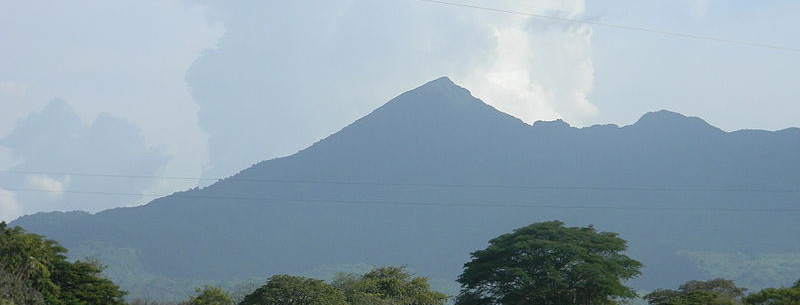
Zapatera
Between Granada and Ometepe is Zapatera Island. A large island with very few people, it was once created by its volcano, nowadays dormant. Currently, the island is covered with tropical forests. The Island was once populated by indigenous people, so many old objects and pottery can be found.
